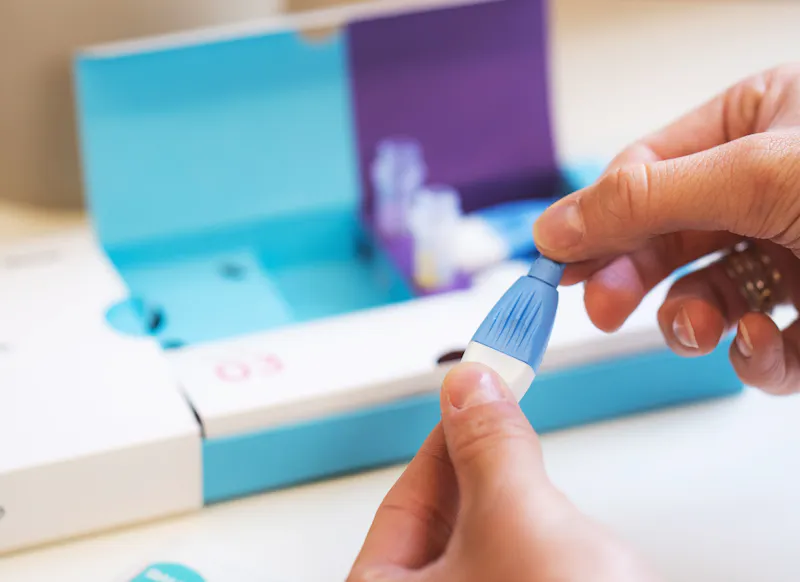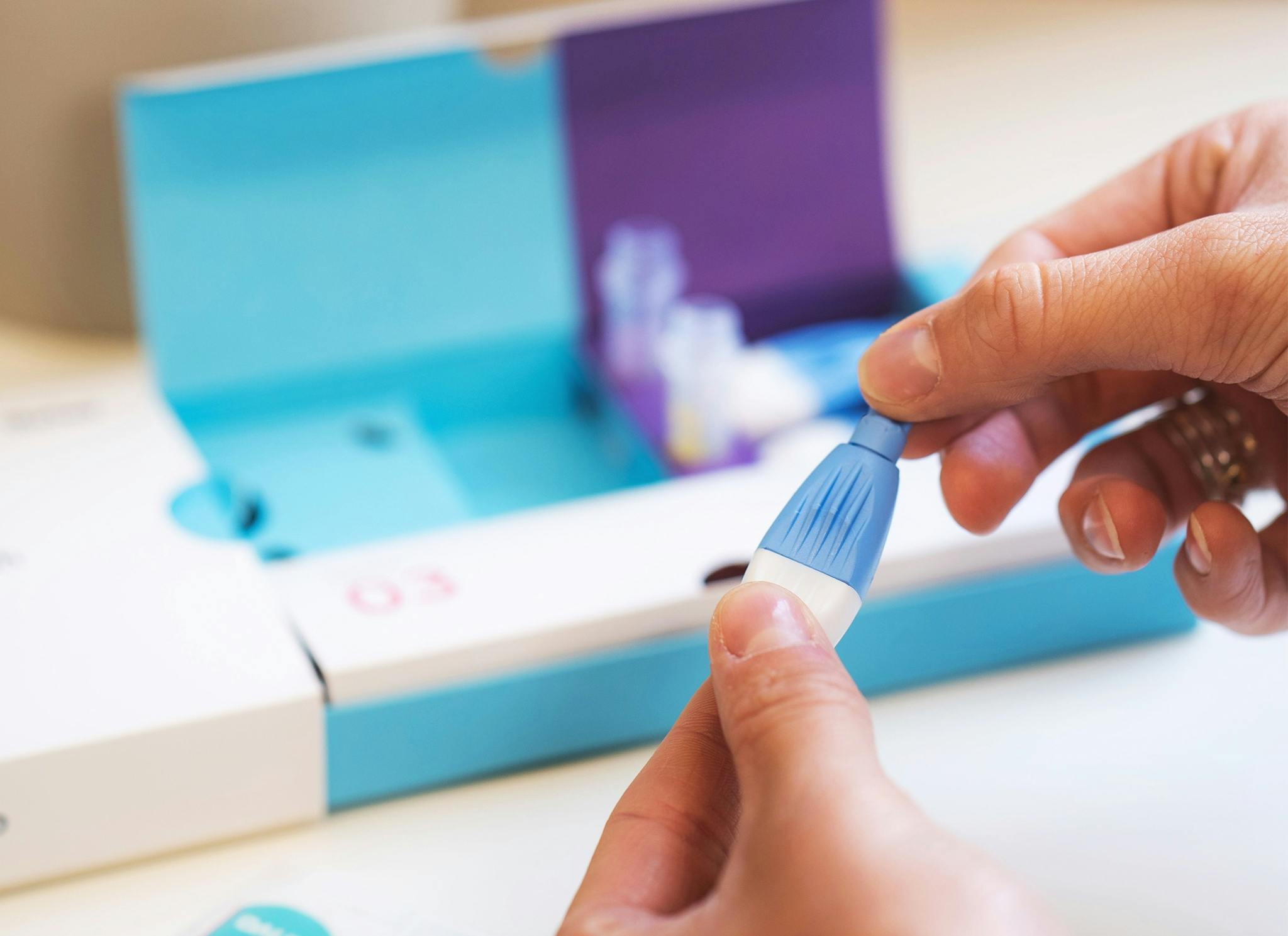What's CRP and how do you test it?
What's covered?


C-reactive protein (CRP) is a protein in your blood that increases when there’s inflammation in your body. Your CRP level might be high if you’re fighting an infection or it could be a sign that you’re at risk of developing a chronic disease, like heart disease. Your CRP level can be measured with a simple finger-prick blood test.
What is CRP?
CRP is a type of protein that’s produced by your liver when there's inflammation in your body. It’s normal for your body to be inflamed sometimes, like when your immune system is fighting an infection. But long-term, low-level inflammation (chronic inflammation) can be a sign that you’re at risk of developing a chronic disease, like heart disease.
What's the difference between CRP and hs-CRP
A standard CRP test checks for high levels of inflammation in your body, which can be a sign of infection or an autoimmune disease. A high sensitivity CRP (hs-CRP) test can pick up much lower levels of inflammation, the type that increases your risk of heart disease.
How do you test your hs- CRP levels?
You can check your hs-CRP levels with a simple finger-prick blood test.
If you’re recovering from a recent illness, injury or infection you should wait until you’re fully recovered before checking your hs-CRP level as it will affect your results. You should also avoid measuring your hs-CRP level if you have any inflammatory conditions, like arthritis or inflammatory bowel disease.

What are the benefits of testing your hs-CRP levels?
When your hs-CRP level is combined with other factors, like your cholesterol levels, triglyceride levels, diet, and exercise habits, you can start to build a bigger picture of your health.
Also, only ~50% of people who have heart attacks have high LDL cholesterol levels. Measuring your hs-CRP level is another way to make sure any signs of heart disease don’t slip through the cracks.
Measuring your hs-CRP level is particularly beneficial if you:
- have previously had a heart attack
- have a family history of heart disease
- have high LDL cholesterol and/or triglycerides
- have high blood pressure
- have diabetes
- are overweight
- or have unhealthy lifestyle habits — like drinking and smoking a lot
What do your hs-CRP levels mean?
A hs-CRP level:
- of less than 1.0 mg/L = low-risk of heart disease
- between 1.0 - 3.0 mg/L = moderate-risk of heart disease
- of more than 3.0 mg/L = high-risk of heart disease
If your hs-CRP level is above 10.0 mg/L, it’s a sign that you have serious inflammation and you should go for more tests to see what’s causing this.
Don’t panic if your hs-CRP level is raised. It just means that there’s some inflammation happening somewhere in your body. Depending on how high it is, you might be able to reduce your levels with lifestyle changes or your doctor can do further tests to figure out what’s going on.
How can you lower your CRP levels?
If your CRP level is raised, there are lots of things you can do yourself to try to lower it.
Following a Mediterranean diet is one of the best ways to lower your CRP level. Exercise, weight loss if you’re overweight, and not smoking are also important.
In some cases, your doctor might prescribe you a statin — a drug that can lower your CRP and cholesterol levels.
Libby, P., Ridker, P. M., & Hansson, G. K. (2009). Inflammation in atherosclerosis: from pathophysiology to practice. Journal of the American College of Cardiology, 54(23), 2129-2138.
Ridker, P. M., Paynter, N. P., Rifai, N., Gaziano, J. M., & Cook, N. R. (2008). C-reactive protein and parental history improve global cardiovascular risk prediction: the Reynolds Risk Score for men. Circulation, 118(22), 2243-2251.
Ridker, P. M., Buring, J. E., Cook, N. R., & Rifai, N. (2003). C-reactive protein, the metabolic syndrome, and risk of incident cardiovascular events: an 8-year follow-up of 14 719 initially healthy American women. Circulation, 107(3), 391-397.